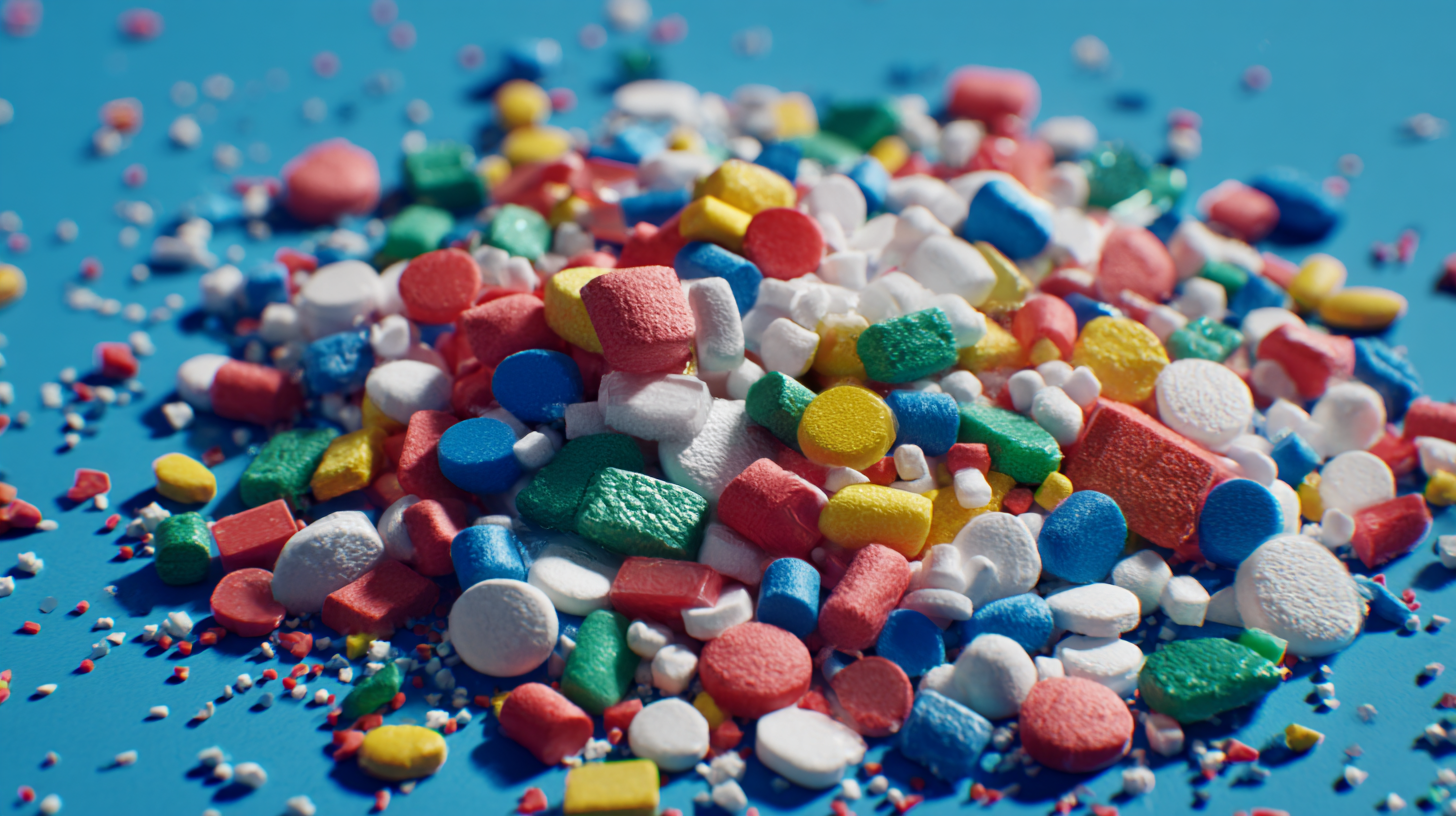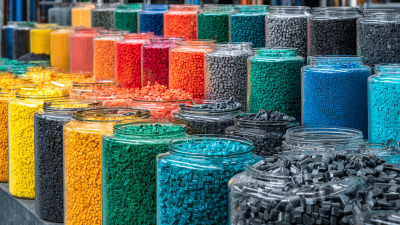- Home
- Masterbatch
- Additive Masterbatch
- Anti-Block Masterbatch
- Anti-Fog Masterbatch
- Anti-Microbial Masterbatch
- Anti-Oxidant Masterbatch
- Anti-Static Masterbatch
- Anti-Termite & Rodent Masterbatch
- Desiccant / Anti-Moisture Masterbatch
- Optical Brightener Masterbatch
- Flame Retardant Masterbatch
- Slip Masterbatch
- Polymer Processing Aid (PPA) Masterbatch
- UV Masterbatches
- VCI Additive Masterbatch
- Filler Masterbatch
- Black Masterbatch
- White Masterbatch
- Color Masterbatch
- Mono Masterbatches
- Special Effect Masterbatches
- EVA Masterbatch
- OXO Biodegradable Masterbatch
- XLPE Masterbatch
- Cable Masterbatch
- Nylon Masterbatch
- TPU Masterbatch
- Additive Masterbatch
- Compound
- Market
- Company
- Blog
- Contact Us
Exploring the Fascinating World of Plastic Effects: How They Transform Our Everyday Materials
In recent years, the phenomenon of "plastic effects" has garnered significant attention in both industrial and consumer markets, transforming the way materials are utilized and perceived in our everyday lives. According to a 2022 report by the International Plastics Association, advancements in plastic technology have led to a 50% increase in the efficiency and sustainability of plastic production. These transformative properties not only enhance the functionality of plastic materials but also play a crucial role in environmental sustainability, making them a focal point for manufacturers and consumers alike.

Dr. Emily Carter, a leading expert in material science, has emphasized the importance of understanding these effects: "The plastic effect is not just a trend; it represents a foundational shift in material science that can redefine our approach to sustainability." As more industries adopt innovative methods that leverage these unique characteristics, the implications for everyday applications are profound. From packaging solutions that reduce waste to durable consumer goods that last longer, the plastic effect is reshaping products across multiple sectors, encouraging both innovation and responsibility in manufacturing processes.
As we delve deeper into this fascinating world, we will explore the top ten plastic effects that are currently transforming everyday materials, illustrating their significance and potential impact on our future. Through this exploration, we aim to shed light on the ongoing evolution of plastics and their ability to contribute positively to both consumer experience and environmental stewardship.
The Evolution of Plastic Effects: From Idea to Everyday Application
The evolution of plastic effects has significantly transformed our approach to material design and application. Initially, the idea of synthesizing plastics emerged in the early 20th century, with Bakelite being one of the first synthetic plastics developed in 1907. Since then, industry advancements have enabled the incorporation of various plastic effects, enhancing both the aesthetic and functional properties of materials. According to a report by Grand View Research, the global engineered plastics market is expected to reach USD 185.2 billion by 2027, which underscores the rising importance of innovative plastic applications in various sectors, including automotive, electronics, and consumer goods.
Over the decades, technology has propelled the development of plastic effects—from versatile colorations to surface textures that mimic natural materials. For instance, advancements in materials science allow for the production of bioplastics, which are biodegradable and create less environmental impact compared to traditional plastic. The demand for sustainable materials is reflected in a report by MarketsandMarkets, which estimates that the bioplastics market will expand significantly, reaching USD 44.93 billion by 2025. This shift indicates a critical transformation in how plastic effects are perceived and utilized, leading to applications that not only improve functionality but also address environmental concerns.
Innovative Plastic Effects Enhancing Material Performance and Durability
In recent years, innovative plastic effects have significantly enhanced the performance and durability of everyday materials. These advancements in polymer technology allow for the development of materials that are not only lightweight and flexible but also exhibit superior strength and resilience under various conditions. For instance, incorporating advanced additives and composites in plastics can lead to substantial improvements in resistance to impact, heat, and chemical degradation, making them ideal for a wide range of applications from packaging to automotive parts.
Additionally, the integration of smart plastic effects is paving the way for materials that can self-heal or adapt to environmental changes. Such properties are particularly beneficial in industries striving for sustainability, as they can prolong the lifespan of products and reduce waste. Furthermore, the aesthetic appeal of these enhanced materials is also noteworthy; innovative plastic effects can mimic the appearance of natural materials while offering the advantages of synthetic durability. This fusion of functionality and design not only transforms the products we use but also challenges traditional perceptions of plastic's role in our world.
Market Insights: Growth of Specialty Plastics and Their Impact on Industries
The market for recycled plastics is witnessing significant growth, driven by an increasing emphasis on sustainability across various industries. According to recent market analysis, the global recycled plastics market is projected to reach USD 50 billion by 2026, growing at a compound annual growth rate (CAGR) of over 7%. This growth is significantly influenced by the rising demand for specialty plastics that serve diverse applications. The dominant types of recycled plastics include Polyethylene Terephthalate (PET), High-Density Polyethylene (HDPE), Polypropylene (PP), and Low-Density Polyethylene (LDPE), each playing a critical role in sectors such as packaging, automotive, and construction.

The sourcing of recycled plastics is also evolving, with plastic bottles being one of the leading sources. Data indicates that about 30% of recycled plastic comes from post-consumer bottles, showcasing the importance of consumer recycling habits. Furthermore, industries are becoming increasingly aware of the environmental impact of their materials, leading to a growing trend in the adoption of recycled plastics. As regulations tighten and consumer preferences shift towards sustainable options, the push for specialty plastics will continue to reshape industry practices and enhance environmental stewardship.
Sustainability in Plastic Effects: Biodegradable Alternatives and Eco-Friendly Processes
The exploration of sustainability in plastic effects has become increasingly vital as we confront the environmental consequences of traditional plastics. Companies are leading innovations in developing biobased and biodegradable materials, aiming to reduce reliance on conventional plastics. For instance, research indicates that the global biodegradable plastics market is projected to grow from USD 19.36 billion in 2026 to USD 88.71 billion by 2034, highlighting a significant shift towards eco-friendly alternatives. Examples such as biodegradable nails showcase how aesthetic choices in personal care can also align with sustainable practices, effectively decreasing plastic waste.
In the quest for sustainable materials, biotechnological advancements play a crucial role. Innovative materials like Polyhydroxyalkanoates (PHAs) derived from microbial sources offer promising alternatives, potentially transforming how we perceive plastic. This shift is not limited to the cosmetic industry; recent developments in eco-friendly fabrics and dyes are reshaping the clothing market, signaling a broader movement towards sustainability across various sectors. Furthermore, the rise of biodegradable and recycled materials in 3D printing processes highlights the potential for integrating sustainability into manufacturing practices, fostering an eco-conscious approach to design and production.
Real-World Applications of Plastic Effects: Driving Change Across Multiple Sectors
The transformative properties of plastic effects are revolutionizing various sectors, from packaging to healthcare. In the packaging industry, innovations such as biodegradable plastics and smart packaging solutions are gaining traction. These advancements not only enhance the shelf-life of products but also minimize environmental impact. For instance, the incorporation of biodegradable additives enables plastic materials to decompose naturally, aligning with the global movement towards sustainability while maintaining functionality.
In the medical field, plastic effects have led to the development of materials that enhance patient care. High-performance plastics are now used in a variety of applications, from surgical instruments to drug delivery systems. These materials can be engineered to possess antibacterial properties or to be biocompatible, significantly improving patient outcomes. Moreover, the flexibility and lightweight nature of these plastics allow for innovative designs in prosthetics and implants, making them more accessible and effective for patients worldwide. As industries continue to explore and harness plastic effects, the potential for further advancements remains vast and promising.

Related Posts
-

Discover How Slip Masterbatch Revolutionizes Plastic Processing Efficiency
-

Exploring the Future of EVA Masterbatch: Trends and Innovations in Polymer Additives for 2024
-

Revolutionizing Repair: Understanding the Science Behind Plastic Fillers and Their Environmental Impact
-

Exploring the Benefits of Compound Masterbatch: Industry Trends and Performance Metrics for 2024
-

Unlocking the Potential of Filler Masterbatch: Innovations in Polymer Manufacturing
-

Exploring the Benefits of Using White Masterbatch in Sustainable Plastic Production
